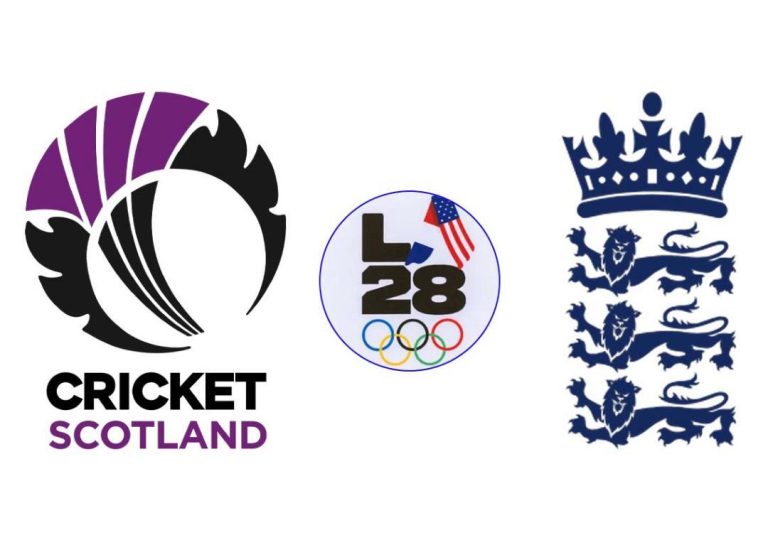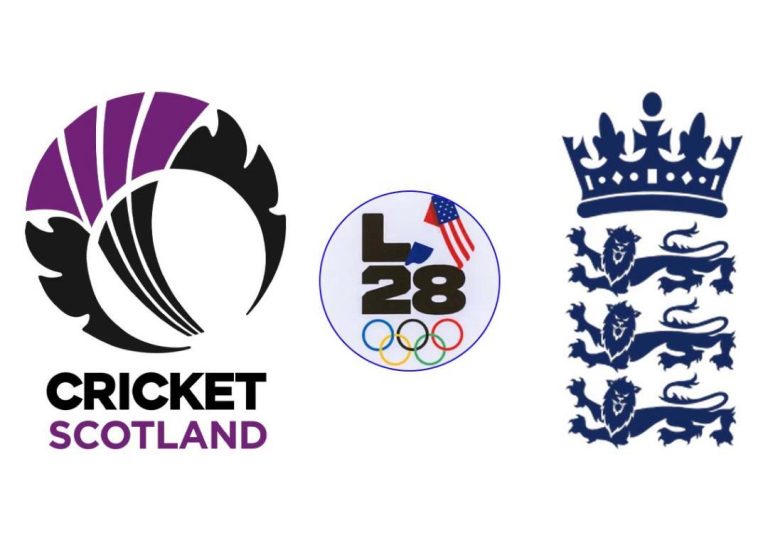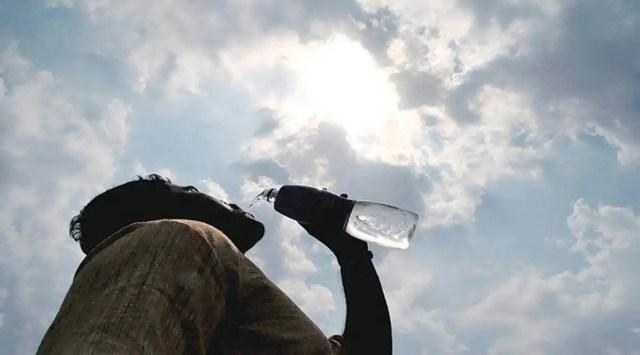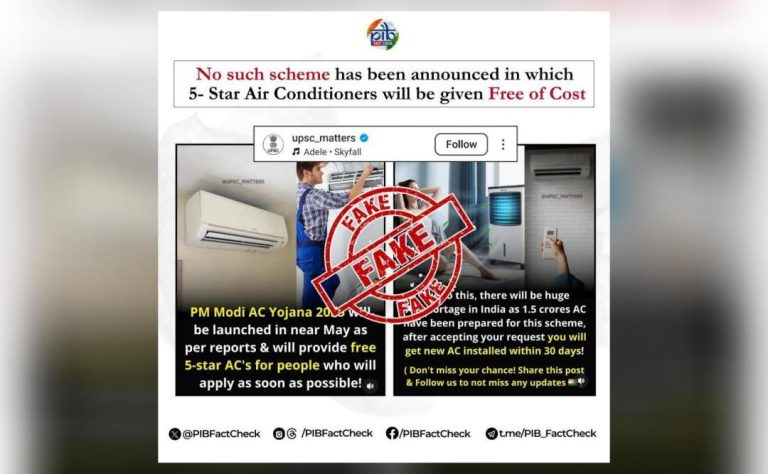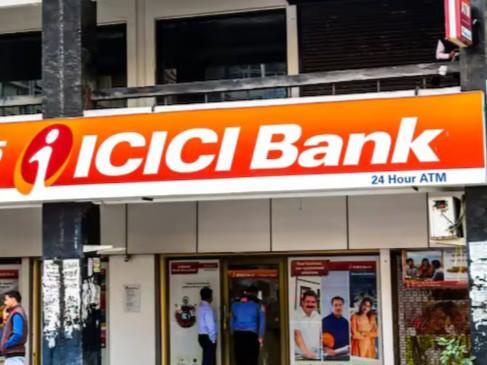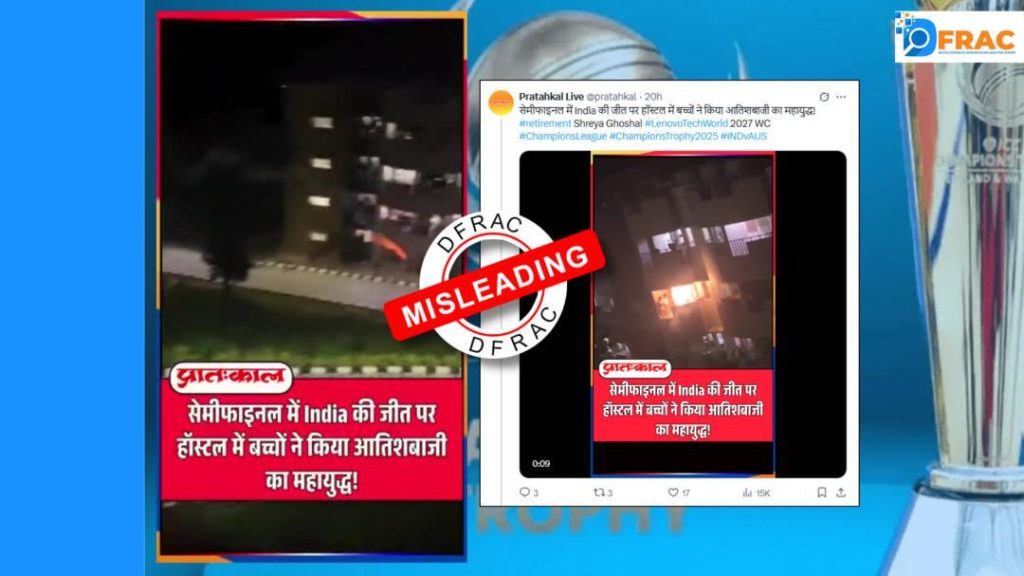
Diwali Firecracker Clash Misattributed to India’s 2025 ICC Victory
Diwali, the Festival of Lights, is a significant celebration in Indian culture, marked by the exchange of gifts, wearing new clothes, and bursting of firecrackers. The festivities are a time of great joy and excitement for people of all ages. However, in recent times, a video depicting firecrackers being exchanged between two buildings has circulated with the claim that it captures celebrations following India’s semi-final victory against Australia in the 2025 ICC Champions Trophy. But, a fact-check by the DFRAC (Digital Forensic Research Academy) revealed that the video instead captures a 2023 Diwali celebration at IIIT Kottayam’s boys’ hostel, where students engaged in a firecracker battle.
The viral video shows students from two buildings in the boys’ hostel of the Indian Institute of Information Technology (IIIT) in Kottayam, Kerala, exchanging firecrackers and celebrating Diwali. The video is a classic example of how social media platforms can be used to spread misinformation and fake news. The claim that the video is from India’s 2025 ICC Champions Trophy victory is a classic case of misattribution.
The DFRAC fact-check report states that the video was uploaded to social media platforms in November 2023, around the time of the Diwali celebrations. The report further notes that the video was not only misattributed to the 2025 ICC Champions Trophy victory but also to other unrelated events.
The reason behind this misattribution is not hard to find. The 2025 ICC Champions Trophy is a significant event in the world of cricket, and the excitement surrounding it is palpable. The Indian cricket team has a massive following, and the semi-final victory against Australia would have triggered immense celebrations across the country. It is easy to understand why someone would want to associate the viral video with this event, especially considering the festive atmosphere of Diwali.
However, the DFRAC fact-check report highlights the importance of verifying information before sharing it on social media. The report emphasizes that fact-checking is crucial in today’s digital landscape, where misinformation can spread like wildfire. The report also notes that the misattribution of the video is not an isolated incident and that there are many other instances of fake news being spread on social media.
The incident also raises questions about the role of social media platforms in spreading misinformation. While social media platforms have been instrumental in spreading news and information, they have also been criticized for not doing enough to prevent the spread of misinformation. The DFRAC fact-check report notes that social media platforms need to take a more proactive approach to preventing the spread of misinformation and that they should invest in fact-checking tools and technologies.
The incident also highlights the importance of critical thinking and media literacy. It is essential for individuals to be aware of the sources of the information they consume and to verify the accuracy of the information before sharing it on social media. The incident also highlights the need for media literacy education, which can help individuals develop the skills they need to critically evaluate information.
In conclusion, the misattribution of the Diwali firecracker clash to India’s 2025 ICC victory is a classic example of how misinformation can spread on social media. The incident highlights the importance of fact-checking and media literacy in today’s digital landscape. It also raises questions about the role of social media platforms in spreading misinformation. As we move forward, it is essential for social media platforms to take a more proactive approach to preventing the spread of misinformation, and for individuals to be aware of the importance of verifying information before sharing it on social media.

